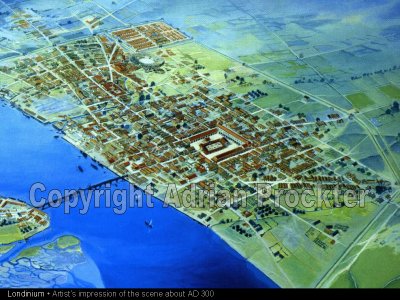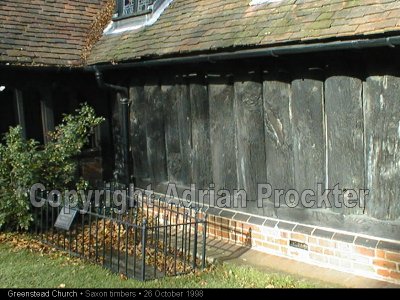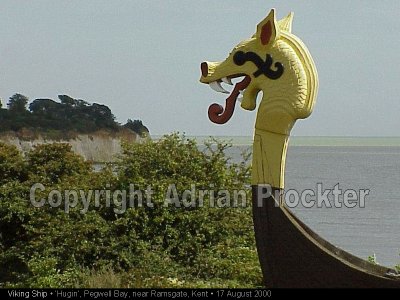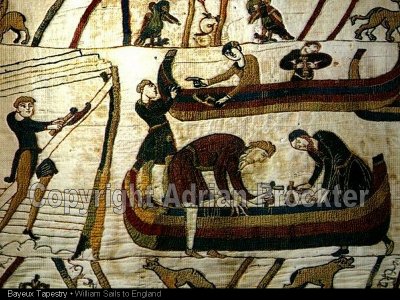
How did London become so large? What do we mean by the City of London? Why is there a 'Lord Mayor of London' and also a 'London Mayor'? Why is Westminster called the 'City of Westminster'? What is the difference between a Metropolitan Borough and a London Borough? What are the Inner London Boroughs? What are the Outer London Boroughs and how did 'Inner' and 'Outer' arise as titles for the boroughs anyway? How many London Boroughs are there?
These and many other questions show what a difficult place London is to understand. This page will try to answer these questions and try to explain how they arose.
 The Romans
The Romans
As far as we know, the whole area of Greater London was open countryside before the Romans invaded Britain in AD 43. There have been many archaeological finds in London, indicating that small communities lived in the area before the Romans arrived. They were probably small settlements and nothing on a very permanent basis.
It was the Romans who established a township on the north bank of the River Thames around the site of London Bridge. They constructed a crossing on almost the same position as today's London Bridge. The township (see picture) on the north side was called 'Londinium' and has become today's City of London. Around AD 200 the Romans built a large stone wall around their town. The wall remained until 1760 when most of it was taken down. A stretch of the Roman Wall remains to be seen near Tower Hill underground station. Two other sections remain to the east of the Museum of London, on the north side of the dual-carriageway called London Wall. At todays crossroads, where Bishopsgate, Cornhill and Leadenhall Street join, stood the Roman Basilica, or Town Hall, and to its south was the large Forum, or market square. The town was laid out on a grid-pattern, of which today's Cannon Street and Newgate Street still lie on the old Roman thoroughfares.
 The Saxons
The Saxons
The Romans remained in Britain for nearly four centuries. Their occupation was suddenly ended when the Roman Legions were withdrawn and brought back to Rome which was under attack. The response was too little, too late and Rome fell. From the British perspective, the control of most of England and Wales was over. This left the indigenous population to carry on with their traditional way of life - farming.
In north Germany the local people there remained under Roman rule and many of them came to the shores of England to settle. They spoke an early form of German and are known as the Saxons. They too were farmers and they settled on the land continuing with their rural way of life.
Being rural people, Saxons lived in houses made from timber, not made from stone and brick as the Romans had done. One timber-walled church remains standing from around the eigth century. It is Greenstead church, in Essex (see picture). The houses were built in the same way as the walls of the church - by splitting tree trunks into two halves and standing them up, vertically, to make walls with no windows. The roof of each house was thatched with a hole at the top to let out the smoke from a fire on the floor, in the centre of the room. It is now known that the Saxons did not settle inside the old Roman wall of Londinium but chose the open land where today's street called The Strand is located. Evidence for their settlement has been found in the Covent Garden area.
From AD 886 the later Saxons lived in what is now the City of London and it is likely that much of the street pattern around St Paul;s Cathedral and Cheapside is based on those Saxon streets and alleyways.
St Paul's Cathedral was also founded in Saxon times, in AD 604, due to the missionary efforts of a man we know as St Augustine, who was sent to bring Christianity to these shores by Pope Gregory. Augustine was well received and it was due to him that a Cathderal (so-named from the Latin word 'cathedra', meaning 'Seat of a Bishop') was founded in London, as well as Cities like Canterbury (where Augustine lies buried) and Rochester.
 The Vikings
The Vikings
Attacks on the shores around Britain were carried out from the third and fourth centuries by seamen we call Vikings, when Britain was still occupied by the Romans. Once the Romans left our shores, the peaceful Saxons posed little threat to the Vikings who plundered churches to obtain the gold objects which they carried off to be melted down and cast into other ornaments.
The word 'Viking' is a generic term for 'Northmen' who came mainly from Norway and Denmark. As a general 'rule of thumb', the Vikings from Norway attacked the north of England and the coast of Scotland while Vikings from Denmark attacked East Anglia and the London area. A replica Viking ship (see picture) is to be seen on the cliffs near Ramsgate. It was rowed to England by archaeologists in 1949 to celebrate 1500 years since the Vikings first came to our shores.
The effect of the Vikings from Denmark is still embedded in London's geography with 'The Strand' (a Danish word for a path or road beside water, in this case the Thames) and 'St Clement Danes', the name of a church whose present-day church still stands on the original site.
Attacks on the coast of East Anglia have left Norfolk with seaside place names like Overstrand and Sidestrand, again referring to places near water, in this case the sea. As Vikings realised that they could easily come inland, with very little resistance being offered by the locals, they attacked London and even settled there, around the Strand. There have been four 'St Olave' churches in and around the City of London, all so-named by the Danes. Only one of the churches remains today, a short distance from the Tower of London.
By the 10th and 11th centuries the Kings of England were intertwined with Viking blood. The last King of England, before the Norman Invasion, was Edward the Confessor. It was due to him that we think of Westminster as the 'Seat of Government'. In 1065 he decided on an ambitious plan to build a new palace on a 'Green Field SIte' and construct an enormous abbey beside it. In today's terms it was like constructing two Canary Wharf developments side-by-side.
Edward's palace eventually became known as the Palace of Westminster and is better known today as the Houses of Parliament. The abbey nearby is, of course, today's Westminster Abbey. Sadly, neither site contains any masonry from Edward's building plan. Most of the Houses of Parliament date from after a disastrous fire in 1844. Much of the Abbey dates from the 14th century.
Edward saw neither the palace nor the abbey completed. He fell ill towards the end of 1065 and died on 6 January 1066. According to Norman sources, Edward had promised England to William of Normandy on his death. In fact the man who assumed the throne was Harold, who was crowned in the completed part of the Abbey.
 The Normans
The Normans
William, as everybody knows, came over to England, to claim the Crown, which he did by fighting the Battle of Hastings. His progress from Normandy, using specially constructed ships is recorded on the Bayeux Tapestry (see picture).
After the Battle of Hastings, in which Harold died by a stray arrow that pierced his eye, William proclaimed himself King of England and was crowned in Westminster Abbey on Christmas Day, 1066.
TO BE CONTINUED ...
